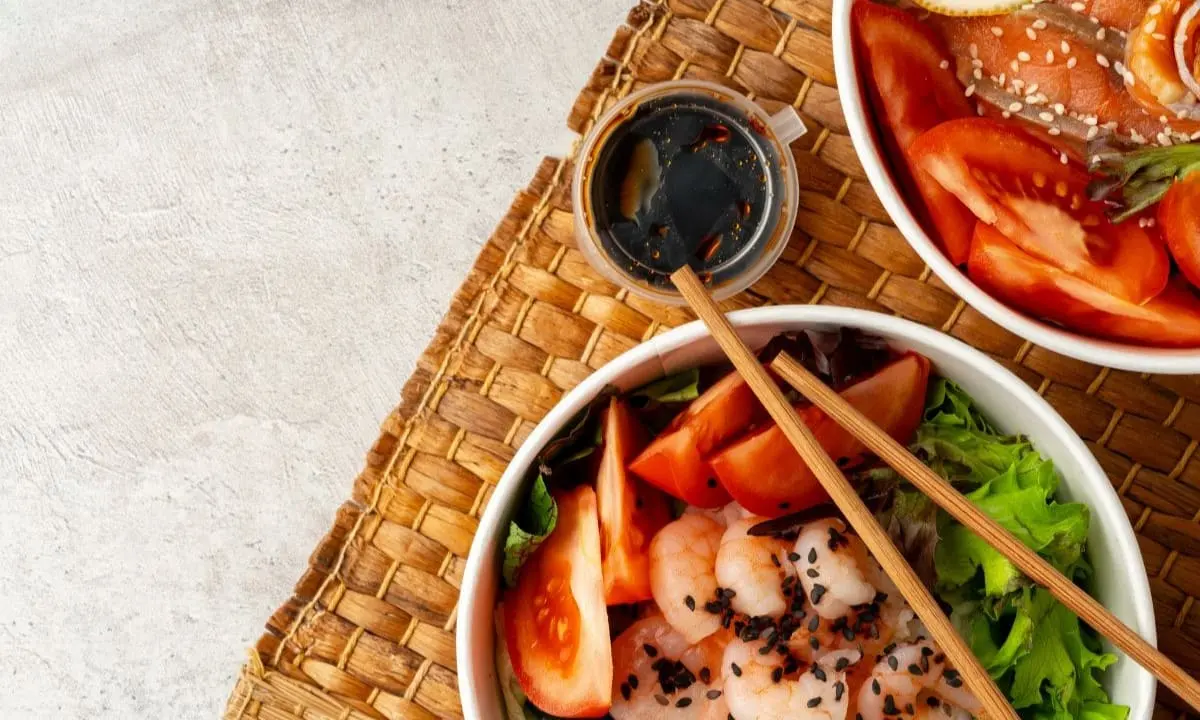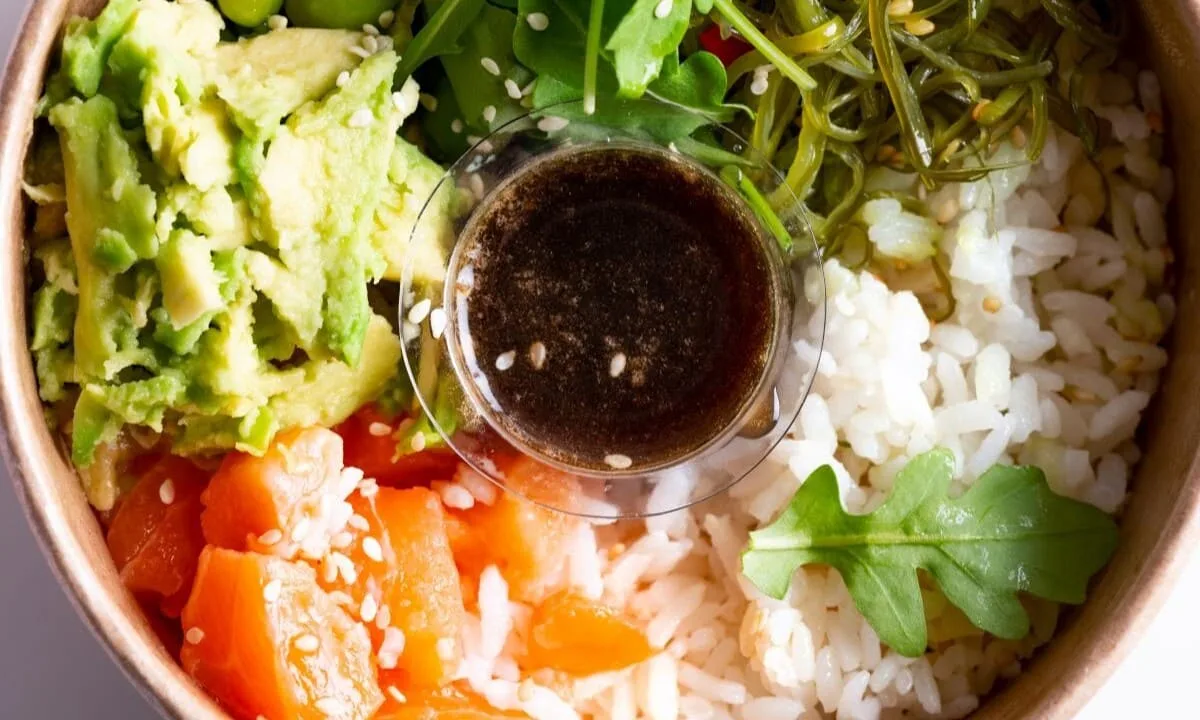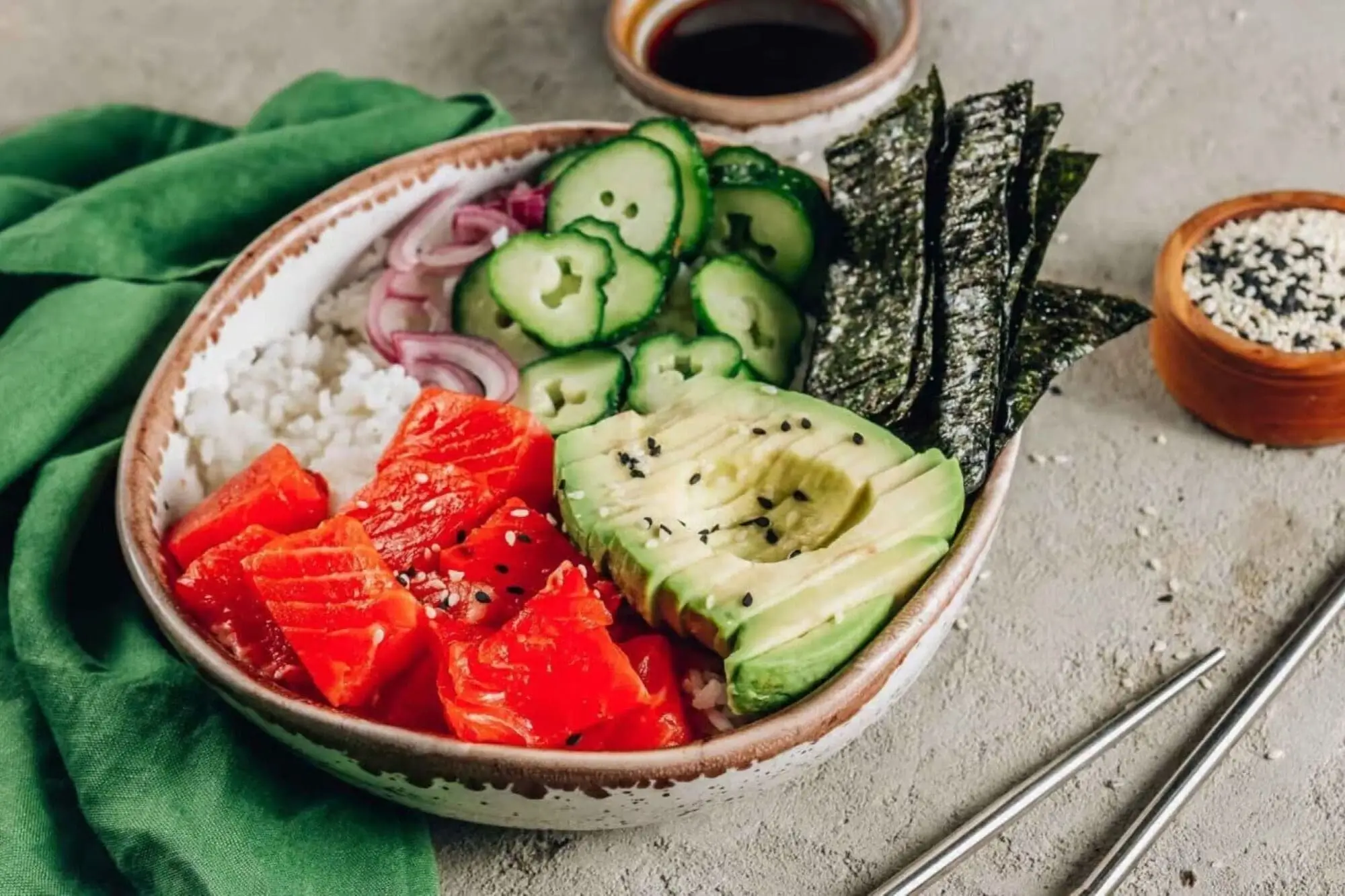Sauce is like the glue that ties a great poke bowl together. It helps make each ingredient in the dish stand out and gives you flavors that leave you wanting more. When you build your own poke bowl, your ingredient selection, sauce choices, and extra toppings all work together. But what goes into this very important saucy part of this classic Hawaiian meal?
What Is Poke Sauce?
Poke sauce does more than just add flavor. It connects all the parts of your bowl into one delicious meal. Most crucially, it’s what gives poke its recognizable taste.
Traditional poke sauce blends soy sauce, sesame oil, and often rice vinegar, along with aromatics like garlic and ginger. This classic combination makes the fish taste fresher, the vegetables more vibrant, and the rice more flavorful.
Is Poke Sauce Spicy?
Sometimes, the sauce in poke dishes can be spicy, but classic poke sauce isn’t. Instead, it focuses on savory flavors from soy sauce and sesame oil. These days, many places offer spicy options, with some versions including chili flakes, chili oil, or sriracha for heat.
Is Poke Sauce Gluten-Free?
Regular poke sauce includes soy sauce, which contains wheat, so it’s not gluten-free. Luckily, more restaurants now offer gluten-free versions using tamari instead of regular soy sauce. You can also find sauces in stores that can be substituted, allowing those with gluten intolerance or celiac disease to still enjoy poke.
How to Choose the Best Sauce for Your Hawaiian Poke
The sauce options at any poke bowl station can be overwhelming because you’re often spoiled for choice. Here’s how to narrow it down based on what your preference is:
- Think About Your Main Protein: Lighter fish like white tuna pair well with citrus-based sauces, while fatty salmon stands up well to richer, creamier options.
- Consider Your Other Ingredients: Lots of crunchy vegetables would go better with a bolder sauce. More creative options like avocado and mango go well with a bit of heat in a sauce to balance the sweetness.
- Your Spice Tolerance: Many poke places rate their sauces from mild to hot. When in doubt, ask the staff or research a brand you’re eyeing.
What Are Some Popular Variations of Poke Sauce?
Four of the most commonly selected sauces on almost any poke menu are these:
- Spicy mayo is creamy and mildly spicy, often a go-to for those trying poke for the first time
- Ponzu is a light, citrusy soy sauce-based option that’s refreshing and doesn’t overpower the fish.
- Shoyu is a simple soy sauce base with sesame oil that’s used in the traditional Hawaiian poke.
- Sriracha-based sauces add a bite to traditional bases for those who like it spicy.
Poke Sauce Recipe You Can Try at Home
If you’re ready to try your hand at an easy poke sauce recipe, this DIY one is a great place to start:
- ¼ cup soy sauce (low-sodium works best)
- 1 tablespoon sesame oil (must be toasted, not regular)
- 1 tablespoon rice vinegar
- 1 teaspoon honey
- 1 green onion, finely chopped
- 1 teaspoon fresh grated ginger
Mix everything in a bowl and wait 10 minutes; this resting time matters. Pour over fresh tuna, salmon, or tofu with your favorite poke ingredients, from vegetables to toppings.
How Long Should I Marinate Fish in Poke Sauce?
Marination for poke protein, like fish, depends on what you want. For the freshest taste, mix and eat right away. For a richer flavor, let the fish sit in the sauce, refrigerated, for 30 minutes to 2 hours. Be careful, though, as leaving fish in citrusy sauce too long will “cook” it like ceviche, making it firm and opaque.
How Long Does Poke Sauce Last in the Fridge?
Homemade sauce keeps for about a week in the fridge, if stored in a sealed container. Many find that it can taste better on day two after the flavors have had time to blend together.
Mix, Match, and Make Poke Bowls Your Own With Tasty Sauces
The sauce you choose completely changes your poke experience. Some like it spicy, and some prefer it mild, while others want lots of sauce or crave only a hint. Many poke fans mix sauces. For instance, half ponzu and half spicy mayo give you brightness and creaminess in each bite.
Poke bowls then vs. now are different, highlighting how adaptable this dish can be. So, why not try something unique or mix a blend that suits your taste buds best, while merely drawing inspiration from the classics?






